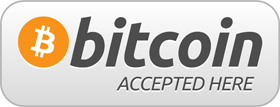Riverside Resources (TSX.V: RRI | OTCQB: RVSDF)
In this exclusive interview Dr. John-Mark Staude sits down with Maurice Jackson of Proven and Probable to highlight the companies most recent promising, strategic acquisitions in Sonora, Mexico, where RRI just added 5 new project to their Property Bank. These new projects will align perfectly with RRI agreement with BHP to focus efforts on Copper discoveries in the region.
For investor questions please call or email:
Communications Team 778-327-6671
Email info@rivres.com







